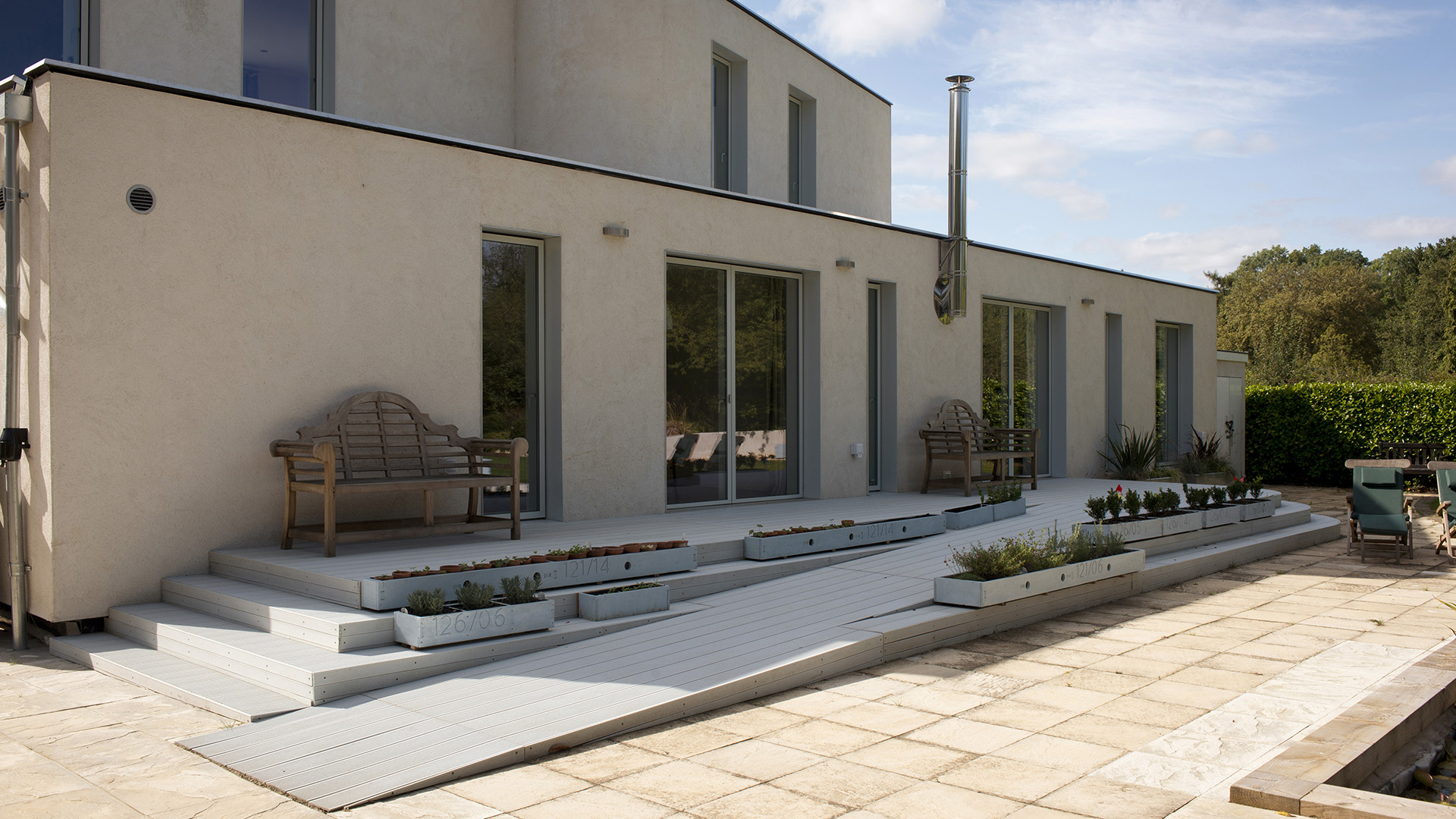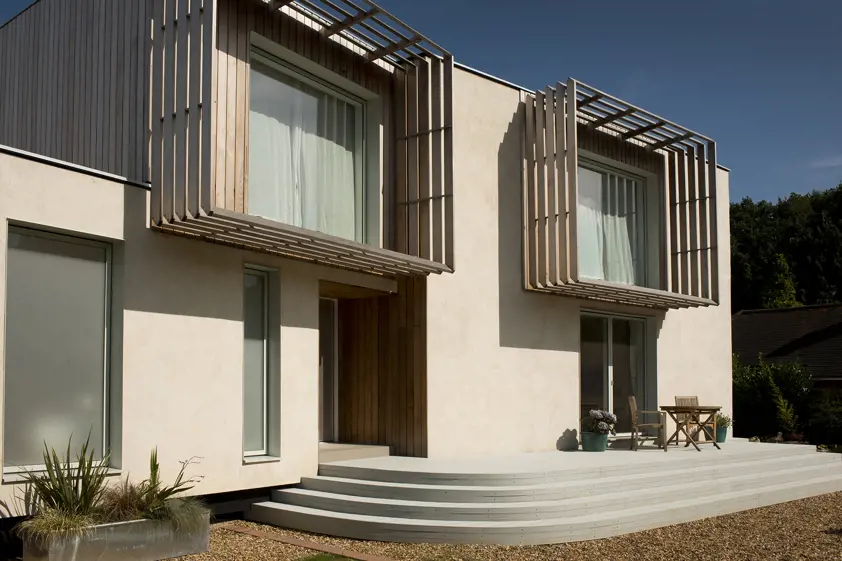Applying a ‘more with less’ concept, Oaklands was designed by FACIT Homes, an innovative developer led by two industrial designers. UPM ProFi Deck was chosen in part for its recycled raw material and low energy production. In addition the broad range of colour options provided the owners of Oaklands and FACIT with an outdoor area which seamlessly blends itself with the exterior of the house.
UPM ProFi Deck’s anti-slip high friction surfaces were another key factor for the property’s owners who have accessibility requirements for their family members.
Celia Brackenridge, owner, commented: “We needed a low-maintenance material which also reduced the chance of slipping. Our mothers are both in wheelchairs or require care when walking. UPM ProFi Deck means we can move them in and out of the house without worrying about slipping on the deck.”
She added: “Our house is designed to maximise our enjoyment in retirement. Therefore it was essential to avoid high maintenance timber decking which would need annual maintenance. Plus the colour options means we could complement the design of the building”.
Bruce Bell, MD of FACIT said: “We’re delighted with the outcome. We knew that UPM could deliver high quality sustainable materials and UPM ProFi’s credentials were equally up to the mark. Its provenance in terms of coming from recycled label stock was a clear winner for the owners and FACIT when selecting the landscaping materials.”
Using state-of-the-art IT and cutting technology, FACIT used UPM Plywood’s WISA Spruce as the core component of the building. Panels were cut into pre-configured designed by an on-site CNC machine minimising waste and optimising build time. Once cut the panels were made into large plywood boxes and slotted together quickly. Insulated with old newspapers, the house is extremely energy efficient with the owners stating very low gas requirements and the ability to sell solar energy back to the grid.
UPM also recovered all waste wood on site for combustion in its Combined Heat and Power Plant at UPM Shotton paper mill in North Wales.
Bruce concludes: “This was the icing on the cake for us. A real cradle to cradle approach – and a step to truly low carbon construction.”
